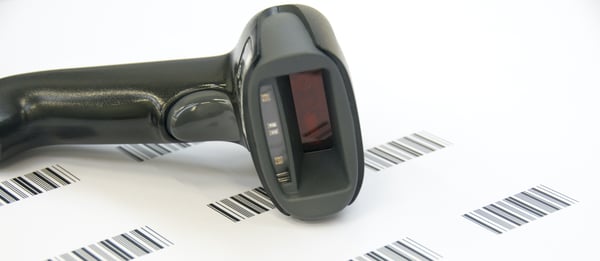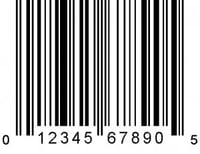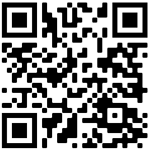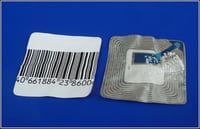Understanding Chemical Inventory Management Tracking Tools

Barcodes, QR codes, and RFID tags might seem similar, but they're not interchangeable. While all three are tools that can help you tag and track chemical containers, each is designed to work differently.
Before you can decide which labeling system is right for your chemical inventory management, you'll need to understand the different types of tracking tags, what information they contain, and the strengths and limitations of each one.
We worked with our Manager of Chemical Solutions, Sarina Schwartz-Hinds, to develop this guide so that you can get to know the various available labeling systems.
Why Should You Consider Chemical Labeling?
A single research laboratory can have hundreds of bottles, vials, and tubs of chemicals on hand. For each container, you need to track the identity of the chemicals, amount present, associated hazards, as well as where it’s located and to whom it belongs.
In addition, each new container needs to be logged in your chemical inventory when it’s purchased and tracked when it’s disposed of. That’s a lot of information! And as we all know, the devil is in the details — the one thing that gets missed somehow always ends up being the most important.
The most thorough solution is to place stickers or tags (in the form of barcodes, QR codes, or RFID tags) on your chemical containers when they enter your facility. But how do you decide which tool to use? Let’s break it down.
Barcodes

As the name suggests, barcodes are a series of black lines (or “bars”) that represent a string of numbers (a “code”). Barcodes are also known as Universal Product Codes (UPC).
When you scan a barcode, the scanner translates the sequence of bars into a string of numbers. These numbers correspond to a specific record in a database that contains information about the associated record.
Barcodes can be used to label virtually anything — including chemical containers. They’re inexpensive to create and print. Since most barcode scanners are just point-and-click devices, they require virtually no training. Today, there are even apps available that allow you to use your mobile phone or tablet as a barcode scanner.
However, there are some downsides to barcodes. The biggest is that each container has to be scanned individually, which can be time-consuming if you need to inventory a large number of containers in a short time (this challenge is the same for QR codes).
A common misconception about barcodes for chemical inventory tracking is that you can use the barcode that’s already on the container when you get it. But because the manufacturer’s label corresponds to their inventory, you’ll need to print a new label for your inventory. If you get 4 bottles of sodium azide from one manufacturer, they’ll all have identical barcodes! That’s counterproductive to your container tracking efforts. Fortunately, printing and affixing new labels is fast and easy (though there is more complexity to selecting the right label than you might expect).
Pros and Cons of Chemical Inventory Barcodes
Pros:
- Inexpensive to create and print
- Easy to use
- Time-tested
- If you decide to switch chemical inventory tracking software, barcodes can be easily transferred to the new system
Cons:
- Limited data storage and no special characters
- Each container must be scanned individually
QR codes

A QR code is a two-dimensional barcode that can be read by a smartphone or tablet. QR, or Quick Responsive, codes were first developed in 1994 for the automotive industry. Today, you might see QR codes on concert or sporting event tickets, or on marketing materials like flyers, coupons, and posters. They are also frequently used for chemical inventory tracking.
The information in a QR code is, 99% of the time, a static URL (for example, encoding the string https://www.scishield.com/en/modules/chemtracker but written in symbolic squares). When you scan a QR code with your device's camera, you'll be automatically taken to the specific webpage (URL) that the code instructs. Once a QR code is printed, it will always direct to that specific URL.
This is no different for your chemical inventory system. When you scan the QR code on a container, it will often be set up to take you to a URL specific to that individual container. Generally, you’ll have the page set up to display relevant information about the particular container. As you may already be able to imagine, QR codes can store much more information in a given area than normal linear barcodes.
It is critical to remember that once your label has been printed, the destination URL cannot be changed. So if you ever need to change the URL — for example, during a site redesign or migration to a new software system — you would have to print all new labels and physically replace the old ones for each container in your inventory. That could mean relabeling thousands of containers. From a perspective of future-proofing your chemical inventory, QR codes create a lot of risk for additional, avoidable work and cost.
To illustrate this critical difference, let’s quickly go through the process of migrating a barcode vs a QR code based from an old chemical inventory system to a new one:
Understanding chemical inventory barcode migration:
- In your old system when a barcode is scanned, the scanner reads a string of characters
Example: 43784780. - Your system cross-references this string (43784780) with your database, which pulls information from or directs you to the associated page
Example: Sodium Azide bottle #46. - In your new system, you need to migrate your chemical inventory information (including the data for Sodium Azide bottle #46).
- When the existing barcode is scanned, it still gives the same string (43784780) and your new database can cross-reference it and provide you with information about Sodium Azide bottle #46.
- Success! You’re all done, and you don’t need to change your labels.
Understanding Chemical Inventory QR code migration:
- In your old system, when a QR code is scanned, the scanner reads the string of characters
- Example: https://www.oldsystem.com/SodiumAzide46.
- You are automatically redirected to the URL where you can view information about the container, or information is pulled from that URL.
- In your new system, you need to migrate your chemical inventory information (including the data for Sodium Azide bottle #46).
Here’s where the problems begin: - When the existing QR code is scanned, it still takes you to the www.oldsystem.com address. But you don’t have a contract with your old system – you need to go to www.newsystem.com!
- The QR code is now effectively useless. It leads to a dead URL. You now need to generate a new QR code for Sodium Azide bottle #46, and then go out and apply it to the correct bottle. You also need to do this for every other container in your chemical inventory.
Pros and Cons of Chemical Inventory QR Codes
Pros:
- Easy to use
- No special scanner required - can use a mobile phone or tablet
- Store large amounts of information
Cons:
- Destination can’t be changed after printing
- Each container must be scanned individually
RFID

RFID stands for radio frequency identification. Unlike barcodes and QR codes, which use graphics to encode information, RFID uses radio waves to transmit information to a specialized electronic reader. You might have seen RFID tags used to tag books at the library, to microchip your pet, or to scan into your office — and of course, for chemical inventories.
As we said before, RFID tags transmit information wirelessly from the tag to the paired reader using radio waves. That means RFID tags don’t have to be scanned individually. They don’t even have to be within line of sight of the reader. As long as the tags are within range — typically between 3 and 100 feet, depending on the type of tag (some can be designed for close proximity of inches) — they will transmit information to the reader.
This has many useful applications for chemical management. Instead of scanning each container individually, you can inventory an entire stockroom just by waving the RFID reader nearby.
Or, you could place a reader in a monitoring station near waste disposal areas. As containers pass by the monitoring station on their way to the disposal bin, the reader will log each chemical being discarded.
This convenience comes with some trade-offs, though. Because they utilize more complex technology, RFID tags and readers cost more than barcodes. And since RFID uses radio waves rather than line-of-sight, readers may pick up undesired chemical labels from areas outside of the desired survey area. RFID systems can also be interrupted by other devices that emit RF signals. While that’s not necessarily a deal-breaker, it’s something to consider when setting up your inventory system and deciding what types of tags and readers to get.
Pros and Cons of Chemical Inventory RFID Tags
Pros:
- Tags don’t need to be scanned individually
- Fastest way to read a large number of containers
- All data is transmitted instantaneously
- Can set up static monitoring stations
Cons:
- Tags and readers are more expensive
- May be affected by interference
- More complex technology means that when something doesn’t work, it may be harder to fix
Final Thoughts
Now that you know the differences between barcodes, QR codes, and RFID tags, you’ll be in a better position to choose the right labeling system for your needs.
Labeling can also be complicated, which we’ll tackle in-depth in a future post. For now we’ll leave you with some food for thought:
- Choosing a labeling system is more complicated than just printing out stickers and affixing them on containers. You’ll need to consider what information you want to store, where the labels will be used, and how you plan to distribute, apply, and use them.
- The laboratory environment presents its own set of unique challenges for labeling. Chemical labels must be rugged enough to withstand abuse from heat, cold, water, and even exposure to corrosive chemicals or strong solvents.
- Some organizations employ a combination of different labeling methods to meet their needs.
SciShield’s chemical inventory barcode system was built by scientists, for scientists. Built with a proprietary chemical database originally developed by Stanford University, ChemTracker utilizes RFID tagging to simplify your chemical inventory management, increase accuracy, and streamline internal processes. Leverage our scalable SaaS solution to meet your unique laboratory needs. Request a consultation with our team to learn more.



